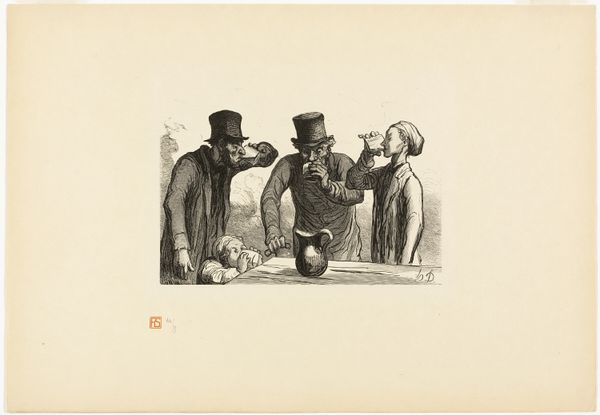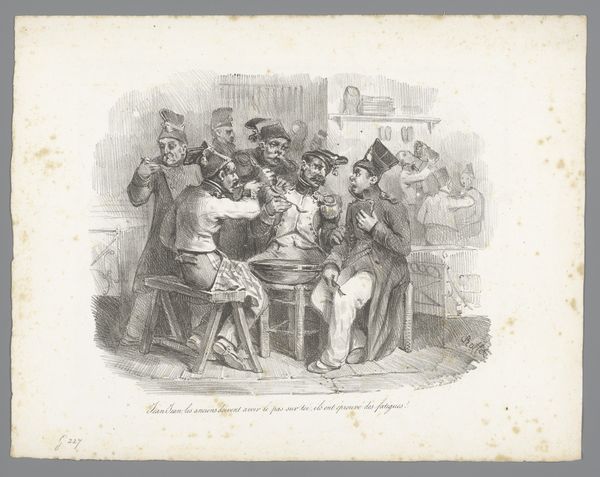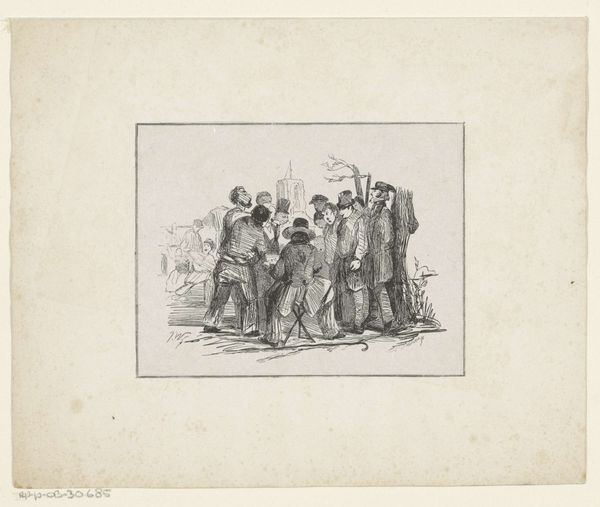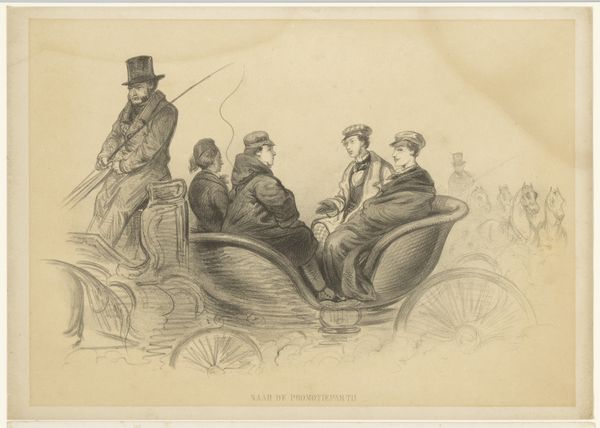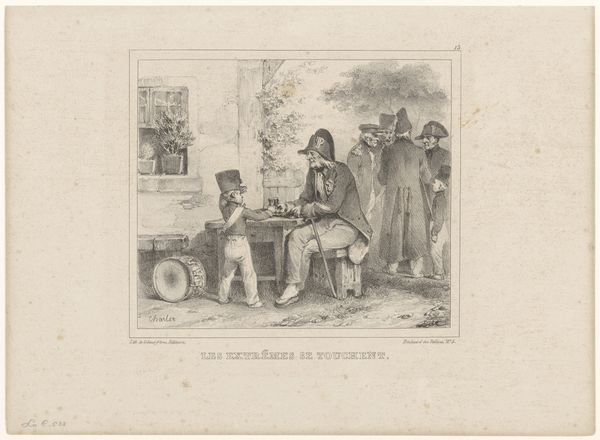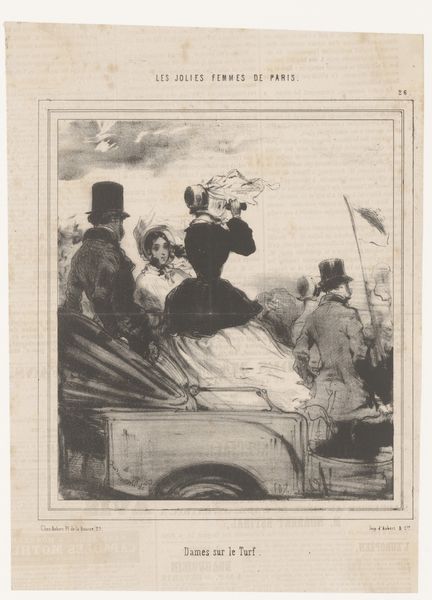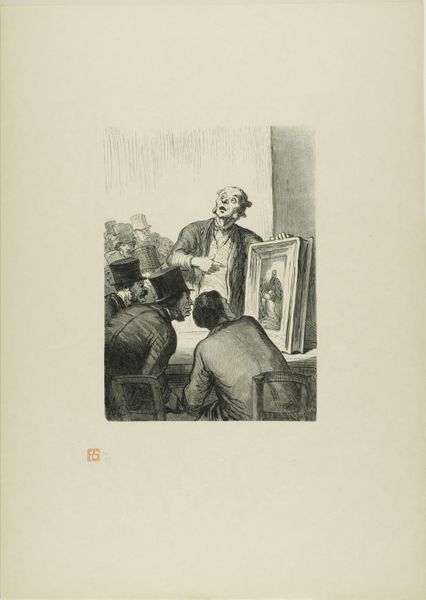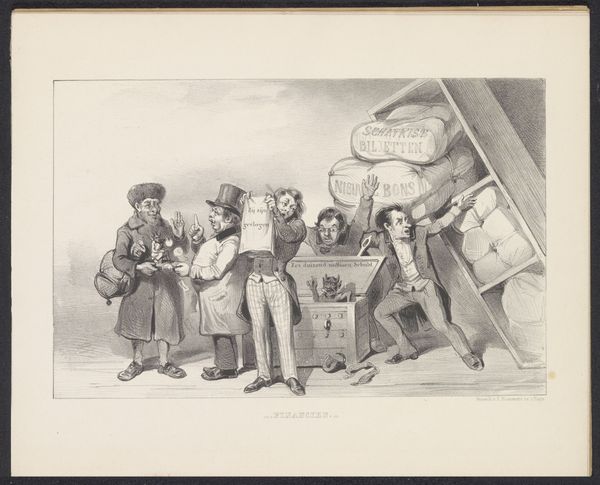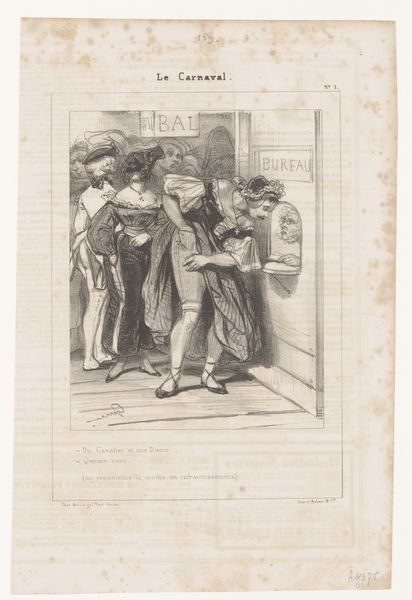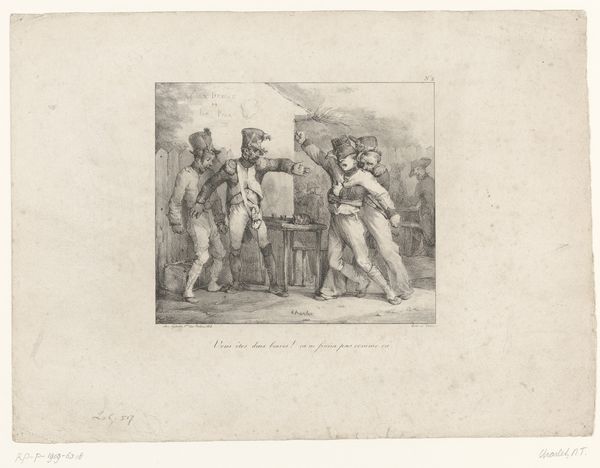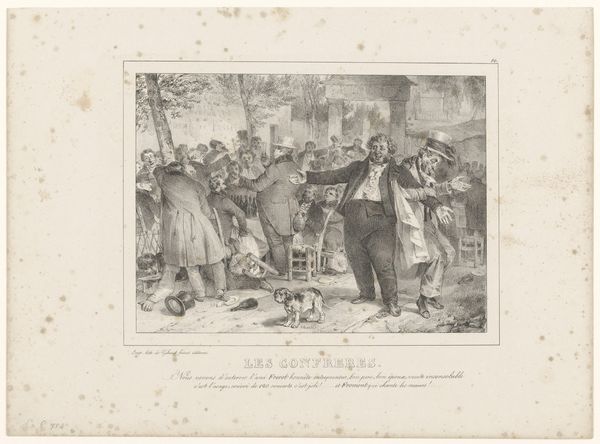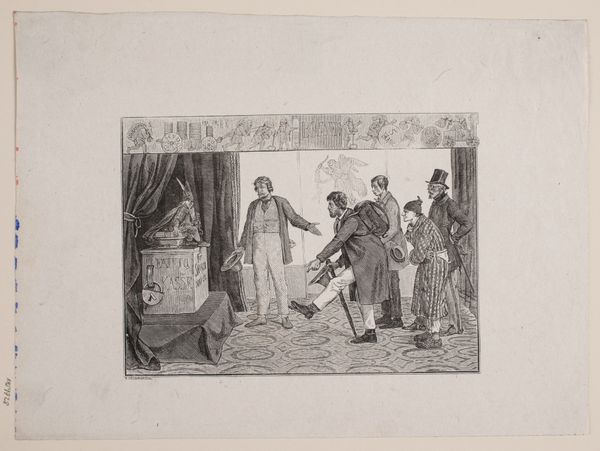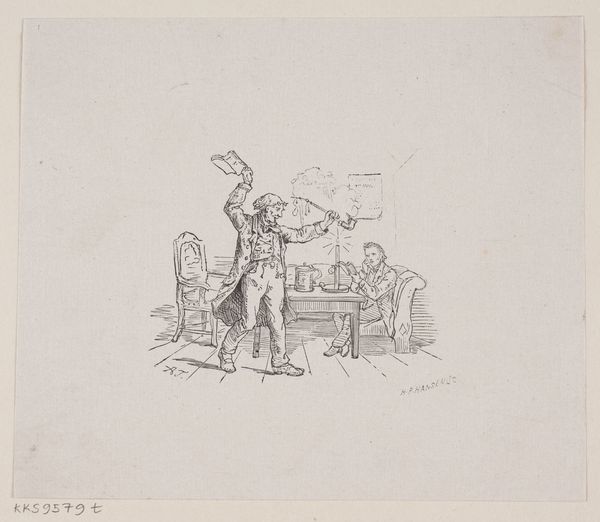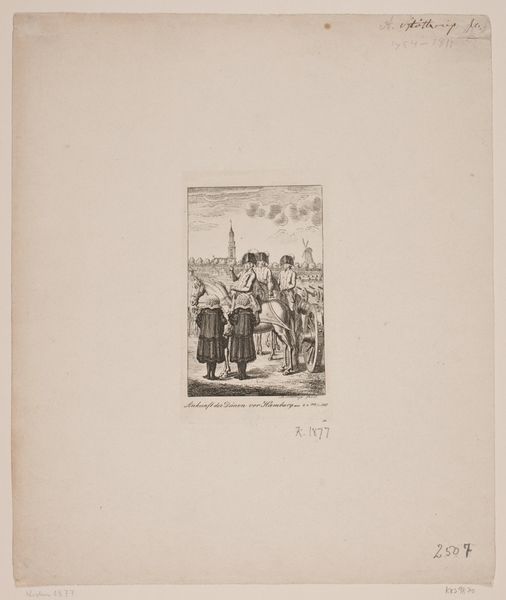
Les amateurs de tableaux à l'hôtel Bouillon, from Tirage Unique de Trente-Six Bois Possibly 1862 - 1920
0:00
0:00
drawing, print, paper, engraving
#
drawing
# print
#
figuration
#
paper
#
france
#
genre-painting
#
engraving
Dimensions: 162 × 227 mm (image); 326 × 455 mm (sheet)
Copyright: Public Domain
Curator: This is "Les amateurs de tableaux à l'hôtel Bouillon" by Charles Maurand, likely created between 1862 and 1920. It’s a print, specifically an engraving on paper, housed here at the Art Institute of Chicago. Editor: Immediately, the scene strikes me as a study in social dynamics. The crowded composition, the dark hats... there's an air of exclusivity but also, strangely, a sense of shared purpose, all filtered through the engraver’s meticulous labor. Curator: Absolutely. Maurand’s work here gives us a glimpse into the 19th-century art world, specifically in France, reflecting the rise of the bourgeoisie and their obsession with art collecting as a status symbol. Notice how all figures are men dressed almost the same. It definitely underlines an environment of wealthy educated elites. Editor: Yes, the uniformity is telling. The means of representing status becomes a social currency within these walls, each potential buyer’s gaze representing more than just their financial position. What of the engraving process itself; how might the linear detail affect the interpretation? Curator: The use of engraving highlights the industrial reproduction of art and knowledge. This allowed for broader dissemination of images, democratizing, in some small way, access to art. Yet, consider who held access; clearly gendered, and certainly economically biased. Editor: Good point. There’s almost a factory-like nature, not just in the reproducibility, but even in the gestures of each subject and how that affects class and labor within the scene. It pushes us to question not only art’s production but also its reception. The material and social aspects of this print underscore art’s role as both commodity and cultural artifact. Curator: It prompts us to see art, or perhaps the marketization of it, as entangled within complex power structures defining that era and resonating even into today’s market forces, questioning access, exclusivity, and what constitutes artistic merit. Editor: A powerful reflection, reminding us how a singular print on paper can unravel intricate social, material, and even economic concerns tied to artwork throughout time.
Comments
No comments
Be the first to comment and join the conversation on the ultimate creative platform.
